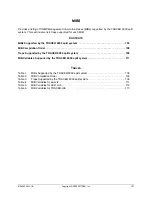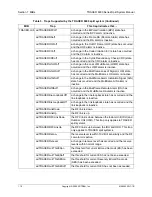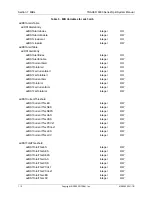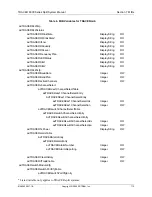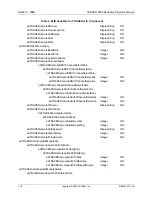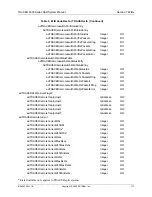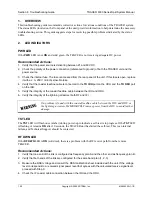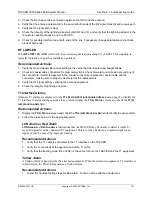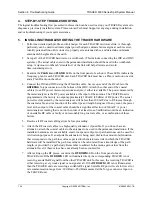
TRACER 6000 Series Split System Manual
Section 8 Troubleshooting Guide
612806320L1-1B
Copyright © 2005 ADTRAN, Inc.
121
5.
Check the RF coaxial cable connection between the ODU and the antenna.
6.
Verify that the antenna polarization is the same at both ends of the RF signal transmit and receive path.
7.
Verify the RF signal path is clear.
8.
Check the integrity of the lightning arrestors (both RF and IF), and verify that the lightning arrestor in the
IF cable is capable of passing up to ± 60 VDC.
9.
Check for possible interference at both ends of the link. If necessary, change polarization and/or band
plans at both ends.
RF LOW LED
If the
RF LOW
LED is
ON
(solid red), the received signal is approaching 0 V of RSSI. This condition is
typically indicative of a path or installation problem.
Recommended Actions:
1.
Verify the far-end transmitter power setting is the value that the link planning budget allows.
2.
Check all coaxial cable connectors for solid connections. Check for water and corrosion around any of
the connectors. If water is apparent in the coaxial connectors, replace the coaxial cable and the
connectors, making sure to properly weatherproof the replacements.
3.
Verify the RF signal path by verifying the antenna alignment.
4.
Check the integrity of lightning arrestors.
T1 Interface Alarms
All active T1 alarms are displayed in the
T1
X
S
TATUS
/C
ONFIGURATION
/L
OOPBACK
menu page.To identify the
T1 interface in alarm and the specific alarm present, display the
T1(
X
) S
TATUS
screens and check the
T1(
X
)
I
NTERFACE
A
LARMS
field.
Recommended Actions:
1.
Display the
T1(
X
) S
TATUS
screen and check the
T1(
X
) I
NTERFACE
A
LARM
field to identify the active alarm.
2.
Follow the steps below for the appropriate alarm.
LOS Alarm or Red Alarm
LOS A
LARM
and
R
ED
A
LARM
are indications that the TRACER may be unable to detect a viable T1
received signal from the connected T1 equipment. This error may be due to a degraded signal or no
signal, or may be caused by improper framing.
Recommended Actions:
1.
Verify that the T1 cable is connected to the T1 interface on the TRACER.
2.
Verify the connections at the opposite end of the T1 cable.
3.
Verify that the framing mode (D4 or ESF) is the same for both the TRACER and the T1 equipment.
Yellow Alarm
A Yellow Alarm is generated by the attached equipment. When the attached equipment’s T1 interface is
in Red Alarm, the TRACER generates a Yellow Alarm.
Recommended Actions:
1.
Follow the troubleshooting steps for Red Alarm, but do so at the attached equipment.

